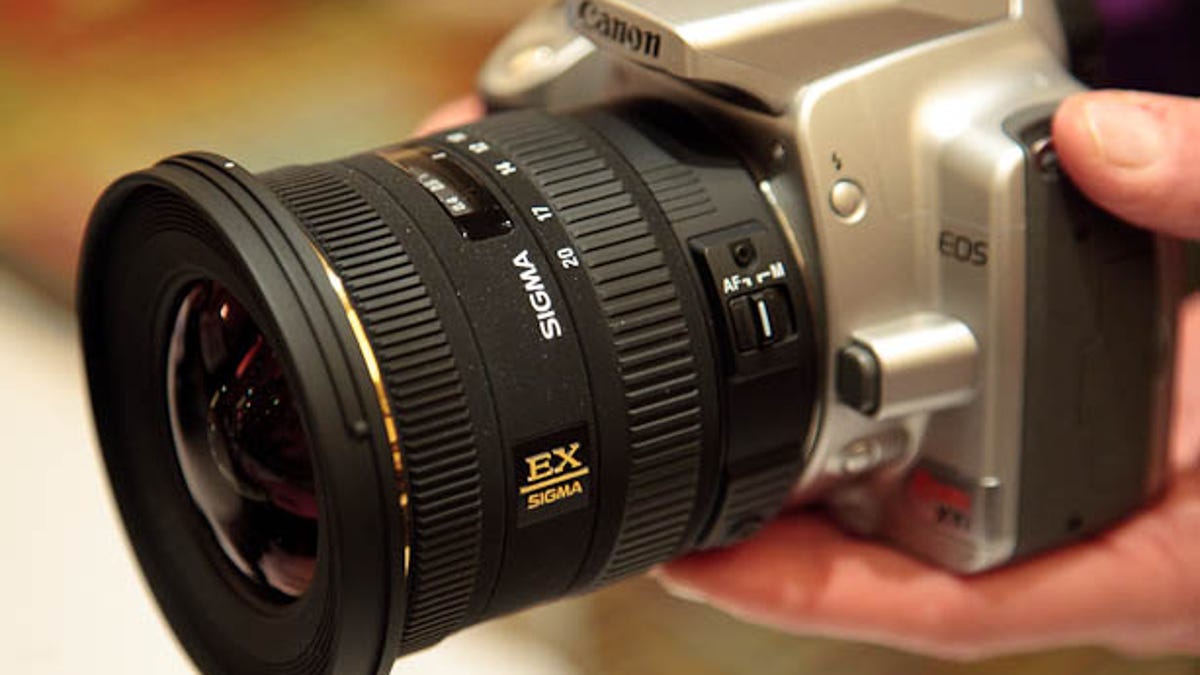Sigma expands image-stabilized lens range
The third-party lensmaker adds a higher-end ultrawide-angle zoom and expands use of image stabilization with 18-50mm and 50-200mm zooms.

LAS VEGAS--Offering some higher-end alternatives and expanding image stabilization more broadly, Sigma announced a trio of lenses for digital SLRs Monday at the Photo Marketing Association (PMA) trade show.
The three new models, which will work on Canon, Nikon, Pentax, Sony, and Sigma cameras, are a higher-end 10-20mm ultrawide-angle zoom, and 18-50mm and 50-200mm zooms that unlike earlier models come with optical stabilization. The lenses are due to ship this spring, but pricing isn't yet announced, said Christine Moossmann of the company's marketing department.
Sigma already offers a 10-20mm ultrawide, but the new 10-20mm F3.5 EX DC HSM has a wider f3.5 aperture, letting the lens work better in low-light conditions. Among its 13 elements, it's got two extraordinary low dispersion (ELD) glass elements, one super low dispersion (SLD) element, and four aspherical elements, features that help cut down on chromatic aberration, Sigma said. It includes a petal-shaped lens hood and has a close-focus distance of 9.5 inches.
The 18-50mm F2.8-4.5 DC OS HSM lens is one of just a few from Sigma to include image stabilization (which Sigma brands as OS for optical stabilization), a technology that counteracts camera shake to cut down on blur. Canon and Nikon, the top SLR makers, have built image stabilization into their latest 18-55mm kit lenses, so the move helps Sigma stay more competitive.
The Sigma lens has several other features, too. It has an internal focusing design, meaning that unlike many standard 18-55mm "kit" lenses that ship with lower-end SLRs, its length doesn't change when focusing. And like the 10-20mm model, it has a wider aperture than Sigma's existing 18-55mm models or than the camera makers' kit lenses. The 16-element lens has a close-focus distance of 11.8 inches.
The 50-200mm F4-5.6 DC OS HSM is a compact telephoto that brings optical stabilization to this zoom range for Sigma. It's a 14-element design with a close-focus distance of 43.3 inches, Sigma said.
All three lenses use hypersonic motors and Sigma's Super Multi-Layer Coating to cut down on lens flare. They're all designed for mainstream SLRs with smaller image sensors, so mounting them onto full-frame cameras such as the Canon 5D Mark II or Nikon D700 will result in vignetting, Sigma said.

